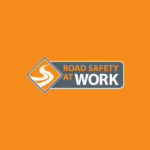DriveSmartBC: Flashing Yellow Pedestrian Crossing Lights
This question is regarding pedestrian controlled crossings with the flashing yellow lights. I know that you have written many articles regarding pedestrians and have quoted the applicable sections of the Act. However, I am still not 100% sure of the requirements of these particular crossings.
Four of these have been added in my community and local area in the past few years and it seems to me that there is some confusion over responsibilities of stopping.
Specifically, is the activation of the flashing yellow signal by the pedestrian a requirement for the approaching vehicles to stop? Or is it simply another signal to the approaching vehicles that the pedestrian is asking for the right of way?
I see many pedestrians push the button and then wait to insure that the approaching vehicles stop before proceeding (some stop / some don’t). I also see some pedestrians gesturing at drivers who continue through, not giving way to the pedestrians.
Other pedestrians push the button and immediately proceed as if they are entitled to cross (trusting that the approaching vehicles will somehow stop for them).
These signals, known as Rectangular Rapid Flashing Beacons (RRFBs), are effective in enhancing pedestrian safety.
Here is the section in the Motor Vehicle Act that sets out the rules for flashing yellow lights:
131 (3) When rapid intermittent flashes of yellow light are exhibited at an intersection by a traffic control signal,
(a) the driver of a vehicle facing the flashes of yellow light may cause it to enter the intersection and proceed only with caution, but must yield the right of way to pedestrians lawfully in the intersection or an adjacent crosswalk, and
(b) a pedestrian facing the flashes of yellow light may proceed with caution across the roadway, in a marked or unmarked crosswalk.
(4) When rapid intermittent flashes of yellow light are exhibited at a place other than an intersection by a traffic control signal,
(a) the driver of a vehicle approaching the signal may cause the vehicle to pass the signal only with caution, and must yield the right of way to pedestrians in the roadway or on any crosswalk in the vicinity of the signal, and
(b) a pedestrian may proceed across the roadway with caution.
The first case is at an intersection and the pedestrian is within the intersection or within a crosswalk beside the intersection.
Remember that the boundaries of an intersection are formed by extending the curb lines across the roadway.
Here the flashing yellow light requires an approach with caution and to yield to the pedestrian. Once you have yielded, you may proceed when safe to do so even if the yellow lights are still flashing.
The second case is anywhere not at an intersection. If the pedestrian is in the roadway or on the crosswalk the driver must approach with caution and yield to allow the pedestrian to cross.
These rules are actually very specific about where the pedestrians must be in order for the driver to have to yield to them.
“crosswalk” means
(a) a portion of the roadway at an intersection or elsewhere distinctly indicated for pedestrian crossing by signs or by lines or other markings on the surface, or
(b) the portion of a highway at an intersection that is included within the connection of the lateral lines of the sidewalks on the opposite sides of the highway, or within the extension of the lateral lines of the sidewalk on one side of the highway, measured from the curbs, or in the absence of curbs, from the edges of the roadway;
The first case (a) applies to a marked crosswalk and the second (b) to an unmarked crosswalk. The first may appear anywhere and the second only at an intersection.
“roadway” means the portion of the highway that is improved, designed or ordinarily used for vehicular traffic, but does not include the shoulder, and if a highway includes 2 or more separate roadways, the term “roadway” refers to any one roadway separately and not to all of them collectively;
If the pedestrian is on the sidewalk they are not on the roadway nor in a crosswalk. If there is no marked crosswalk, if the pedestrian is standing on the shoulder, they are not on the roadway. Strictly speaking, a driver is not required to yield if the pedestrian is not in the position set out in the law.
This raises two issues. Pedestrians don’t like to wait in the positions required as they see it as being dangerous and they are probably right. If you cruise past a pedestrian waiting to cross but standing in the wrong place waiting, you are likely to be marked for not yielding on a road test.
Finally, there is always an onus on the driver in any circumstance to avoid collisions with pedestrians.
This is probably a good place to remind everyone that right of way is given, not taken.



























Comments